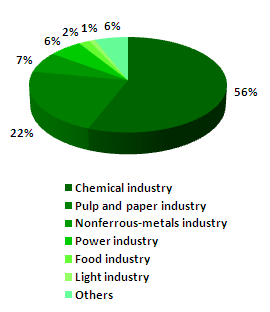About product
Caustic soda (sodium hydroxide) appears as colorless or clear liquid.
By its chemical properties, caustic soda is a strong base, related to alkali.
Caustic soda is highly corrosive to aluminum and zinc; it slightly corrodes tin and lead, and does not influence other metals.
Caustic soda (sodium hydroxide) is produced via electrolysis of an aqueous solution of sodium chloride (along with electrolytic chlorine and hydrogen). The electrolysis is typically done in one of three ways: mercury cell process, diaphragm cell process and membrane cell process, the latter of which is considered as the manner with the most potential.
Applications
Caustic soda is widely used in a variety of industries. The analysis of caustic soda consumption in Russia demonstrates that it is mainly used in the chemical industry, which comprises over half of the total caustic soda consumption in Russia. Moreover, caustic soda is extensively applied in the pulp and paper industry, non-ferrous metallurgy, the energy industry and the food and light industries.
Packing, shipping and storage
Membrane and mercury refined sodium hydroxide is filled into rubberized tank-cars, polyethylene containers, drums or smaller containers. It can be transported by all transportation means in accordance with the dangerous goods regulations for this means of transportation. It should be stored in closed tanks made of strong alkali-resistant materials. The guaranteed storage life for this product is three years from the date of production.
Diaphragm commercial sodium hydroxide is filled into steel rail tanks. It is transported by tank cars in accordance with the dangerous goods regulations. It should be stored in closed tanks made of alkali-resistant materials. The guaranteed storage life for this product is one year from the date of production.
Special properties
It is a nonflammable, non-explosive, caustic substance, Hazard Class II.






